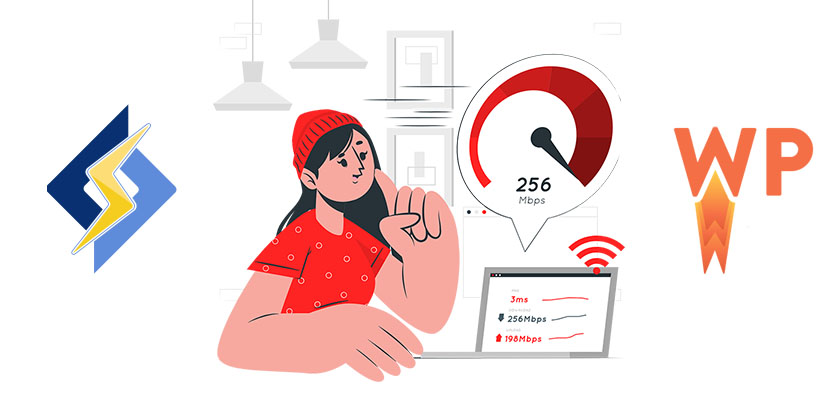Litespeed Cache Vs. Wp Rocket for Beginners
Table of ContentsLitespeed Cache Vs. Wp Rocket - QuestionsGetting My Litespeed Cache Vs. Wp Rocket To WorkGet This Report on Litespeed Cache Vs. Wp RocketHow Litespeed Cache Vs. Wp Rocket can Save You Time, Stress, and Money.The Best Guide To Litespeed Cache Vs. Wp Rocket
Some motifs are much cleaner and a lot more optimized than others. They have a smaller documents size, making them much easier to fill. That likewise means they have fewer bells and whistles (think about animation or specialized style patterns) contrasted to others that are a little bit extra. That's a great trade-off if you want much better loading efficiency.
If you're running your site on Word, Press, you're undoubtedly making use of plugins and widgets to include functionalities to your site. Every plugin you mount includes a bit of code to your web page, making it much heavier than it should be.
Let's state your web server is based in Australia, but you have many site visitors from India. As opposed to sending files directly from Australia, the CDN can send data from a server in India, making this process faster and extra effective. Redirects are an all-natural part of any internet site, and there's absolutely nothing incorrect with them.
Litespeed Cache Vs. Wp Rocket Can Be Fun For Everyone
By connecting as close to the last destination as feasible, you stay clear of developing as well numerous redirects and thus, reduce your web site's load. Unsurprisingly, some of the finest sources for enhancing your web site are from Google.
It sums up the individual experience of site visitors to your website, demonstrating how many Links pass or fail Core Web Vitals and various other page experience signals. Lighthouse, for Google Chrome This is among one of the most advanced performance measurement tools offered and great for benchmarking. Web, Web Page, Examination This device provides a waterfall layout of just how all the assets lots on your internet site.
Every individual is various. Find out that your users are, just how they access your website, and what they do while they're there.
Use the recommendations to get started on improving your web page speed, however do take these with a grain of salt. They are wonderful starting points, however there is so a lot a lot more you can do!

This will decrease latency and outcome in renovations to your web page rate since it decreases any type of opportunity of a hold-up or the number of round journeys produced.
The Greatest Guide To Litespeed Cache Vs. Wp Rocket
As website modern technology, like the growth and wide blog here use of Java, Script libraries, has actually progressed gradually, making use of this modern technology has actually been solidified by the speed, or bandwidth, of Internet connections and the handling and memory resources of devices. In brief: the extra information and sources the server sends out to the internet browser, the longer it takes to deliver the "bundle" across a web link and the slower the web page will certainly be visually provided in the web internet browser and come to be functional.

This is site so when a visitor visits this web site once more, it does not have to reload the whole page. This benefits web page speed, as this conserves on time spent sending numerous HTTP demands to the web server. A fringe benefit is the decrease of data transfer and as a result the general cost of hosting your website.
This will certainly lower latency and result in renovations to your web page speed due to the fact that it reduces any kind of possibility of a hold-up or the number of round trips created.
As internet page technology, like the development and vast usage of Java, Manuscript libraries, has actually advanced in time, making use of this technology has actually been toughened up by the speed, or data transfer, of Internet links and the handling and memory sources of devices. Basically: the much more data and resources the web server sends out to the web browser, the longer it takes to supply the "bundle" across an internet connection and the slower the web page will be aesthetically rendered in the web internet visit site browser and come to be functional.
Page rate influences traffic across all channels and resources, but given that Google has actually led advancements in operation page rate in web search ranking algorithms, reducing latency has ended up being a core element of search engine optimization. While anything that includes time to the web page rendering process is a web page rate variable, there are several concerns that are most usual: The time between when the individual or internet browser demands the page and the first action from the web server is referred to as the server feedback time, also measured as Time To First Byte (TTFB), or the time at which the web server sends the initial information that the web browser can use to construct and render the web page.